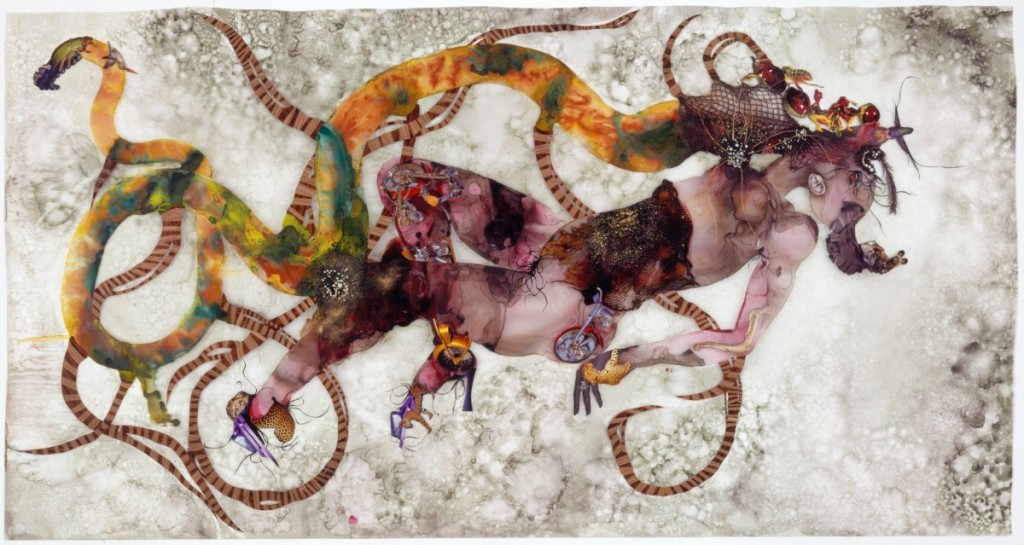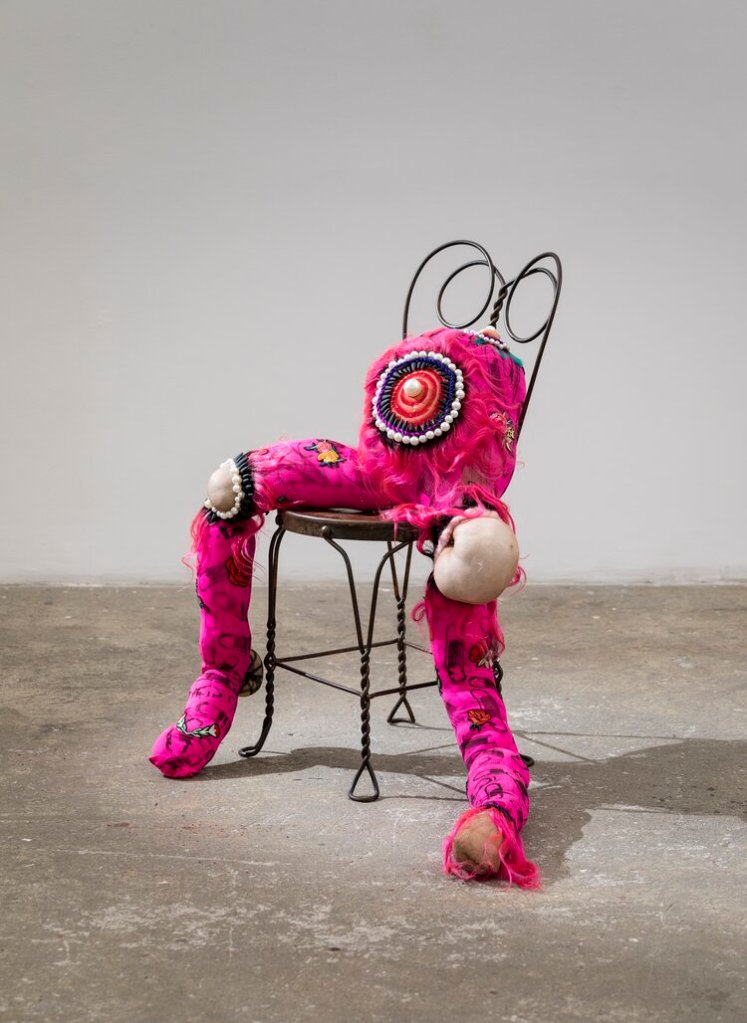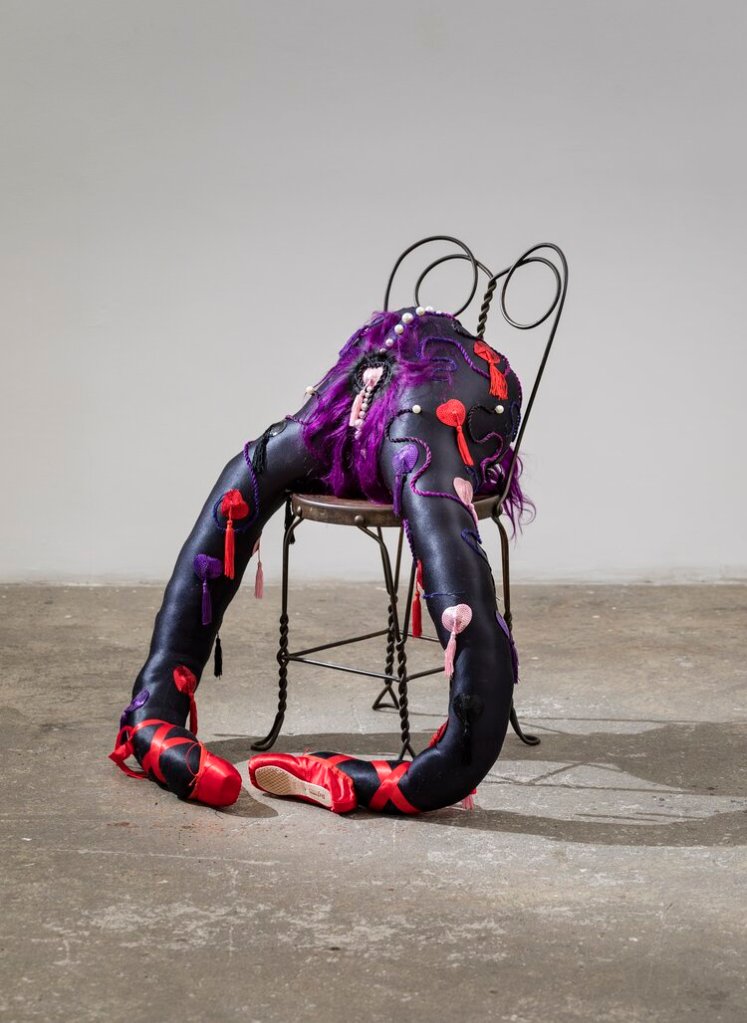Imagined Exhibition #3
Our bodies are always with us, they are a part of everything we do. They should be the simplest thing in the world to accept and understand. And yet for many, bodies are terrifying things, inscribed down to the bone with social expectations incorporating gender, race, disability and sexuality. Some bodies are ascribed with connotations of power and allure, others are seen as abject or corrupt.
As a result, some people find it more difficult to navigate the world. Some are presented with barriers. Some come to despise their bodies. Some people choose the radical act of love, others have found comfort in the narrative of body neutrality (the idea that they may never love their body but appreciate the things it does for them). For many, celebrating the parts of themselves that have been held in contempt by society is an essential act.
There is no way to speak for everyone because we all have different bodies, with different attitudes towards those corporeal forms. However, when artists speak for themselves through art, they represent a feeling or idea that was at one moment in time, for one person, true. They provide a framework that helps all of us to understand ourselves better.
Niki de Saint-Phalle
France

Niki de Saint-Phalle was an artist and sculptor who worked in the latter half of the 20th Century. She is best known for creating art which critiqued social roles for women. Her best known works are the large and striking ‘Nana’ sculptures which first appeared in 1964 and can be found in many countries around the world. They were inspired by Saint-Phalle’s pregnant friend (1) and usually made of fabric and wool on wire mesh. In French, “Nana” is a slang word for ‘girl’, similar to the verlan word ‘meuf’ or how the English might refer to women as ‘birds’.
The Nana sculptures represent femininity and motherhood in a positive light, demanding visibility through their large scale and vibrancy. Conventional ideas of femininity demand that women be as slim and submissive as possible, which is often how they are depicted in classical Western art. The Nanas reimagine the female body in art by allowing women to take up space and make noise through their bright colours and dancing postures.
The biggest Nana of all, ‘Hon – en katedral’ (English: She – a cathedral), invites spectators to enter the female body through a dark hole in the place of the vagina. “Once there, they found themselves in a warm, “dark” female body that functionated as an amusement park with a love-seat sofa, a planetarium, a gallery with “fake” artworks, a 12-seat cinema” and more (2). Whilst this can be interpreted as viewing the female body as a site of pleasure and freedom, it can equally be viewed as a commentary on the commodification of women’s bodies and scopophilic (meaning: to take pleasure in the act of looking) razing of women’s bodies as a resource for pleasure and advertising. Art is always open to interpretation so Hon can be at once a celebration and a capitalist nightmare.
Saint-Phalle was herself a slim, white woman who met the beauty standards of the time, and therefore it was more acceptable for her to put such sculptures on display as she was removed from their appearance. However, the media would often focus on her appearance rather than her art, with one article in the Independent referring to her as Tinguely’s “pretty assistant” who “showed unartistic nervousness.” Saint-Phalle herself acknowledged that whilst she was trying to break down barriers with her art, “if I had been ugly they would have said I had a complex and not paid any attention.”(3) She understood her privilege but wanted a better world for all women.
For women, the limits and internalised expectations placed on them by society affect the ways in which they restrict and constrain their bodies. The Nanas allowed Saint-Phalle to remove the body from constraints and express the spiritual independence of women.
Victoria Dugger
United States
Victoria Dugger is a visual artist who works across multiple mediums including painting and sculpture. Her work explores self-expression using an original mixture of mediums. For example, the colourful ‘doll’ sculptures displayed as part of the ‘Out of Body’ exhibition at Sargent’s Daughters are a highly-embellished with symbols of black femininity. They are adorned with the likes of acrylic nails, hot pink wigs and silk pointe shoes.
Dugger told ArtNews ““I often feel, as a Black disabled woman, that this world wasn’t meant or constructed for me.” (4) In these sculptures, Dugger represents herself in a vivid and joyful way that refuses to hold back in the way that society often expects of marginalised groups. The figures reclining on antique garden chairs “are intended to express a state of atrophy, a wasting away of muscles, which is a symptom of many physical disabilities.” (5) The individual’s self-expression is at the forefront, reinforcing that the dangerous narrative of powerlessness often forced upon disabled people is unequivocally false.
Disabled people’s art is still largely absent in popular culture. These exuberant sculptures demand to be seen. According to Justin Kamp, Dugger’s work shows that “bodies are mutable and prone to rupture, yet they remain expansive — cosmic even — twisting and unfurling in a way that feels potentially liberatory.” Bodies, in all their differences and similarities, are the subjects of a universe of potential self-expression, including a universe where one wears pearls and heart-shaped nipple tassels to sit on antique garden chairs.
Christina Quarles
United States

The ambiguous forms of Christina Quarles melt and smudge, reach through walls, and refuse to stay inside the lines. This style of corporeal representation comes from her experiences “as a fat queer [cis] woman born to a white mother and a black father.” (6) Occupying a space outside of the white heteronormative ideal can often involve a process of reclaiming the body from expectation and existing in a way that feels right. In both queerness and mixed race identity, lies a particular inability to define identity, as markers of identity fluctuate between different groups and spaces. Quarles’ paintings map out this process of disruption and refusal to be contained.
Quarles has described her work as expressing ““the experience of living in a body rather than looking at a body.” (7) What might this mean? To capture the process of looking at a body is to seek out its lines and boundaries, to prioritise the exterior aesthetic and its connotations under the weight of hegemonic codes. In comparison, the experience of living in a body is a constant interchange of pleasures and pains. For example, just by walking uphill, at the same time you feel the rhythmic thud of concrete beneath feet, the quickening pace of your heart, cold wind on your face and a dull ache forming in the back of your calves. This orchestra of feeling cannot be depicted by staying inside the lines.
Or perhaps Quarles’ idea of ‘living in a body’ is less physical and more social. What is the experience of being in certain spaces as a biracial woman? What is the experience of queer desire in a world that tells you that such a necessary joy is wrong? These aspects of life innately involve the body, but they go far beyond the surface. The mutating, abstract figures of Quarles express how the experience of living metaphysically, of what goes on beyond the surface of the body.
Leigh Bowery
Australia

Leigh Bowery was an Australian performance artist in the 80s and early 90s known for his outrageous costumes, hedonistic parties, and disturbing, boundary-pushing performance art. He was a significant part of the post-punk London club scene and Club Kids aesthetic who “influenced everyone from Lady Gaga to Grayson Perry, Alexander McQueen to Lucien Freud.” (8)
His work was unconstrained by gender, a construct responsible for so many of the myths surrounding the body. In Gender Trouble (1990), Judith Butler described drag as a performance of a performance. In simplified terms, this means that whilst drag queens are thought of to dress up as “women”, they often take it to such parodic extremes, with over-accentuated curves, huge wigs and impressively grandiose make-up, that it exposes the absurdity of how we define womanhood. Similar to drag, much of Leigh Bowery’s work represents gender as performative, and the futility of trying to define gender on exclusively corporeal terms.
One example of Bowery’s subversion was appearing as pregnant, even going as far as a grotesque parody of ‘giving birth’ to his wife on stage. Whilst it could be argued that this ridicules the incredible strength of the women and others who give birth, it also exposes our fear of the abject and hypocritical ideas of femininity. Women have long internalised social expectations to prioritise beauty, and yet birth, for centuries seen as women’s sole purpose, is something that people are disgusted by the sight of. Birth scenes in films are almost always the vaguely tired but pristine looking woman in the pristine bed with a pristine swaddled baby. Yet the reality of birth is screams and blood and a complete letting go of social constraints on the body.
Bowery’s work shows the process of reimagining the body can use extreme performance and abjection to expose the construction of gender.
Joan Semmel
United States

The bodies presented by Joan Semmel are a topography of flesh. At first it is unclear what you are looking at, only that it is most likely human. They are body as landscape.
Semmel’s paintings of bodies represent the unclothed female-assigned body as sensual without veering into the usual objectification. In an interview with Jennifer Samet, Semmel said “I wanted to find a way to use the nude that was not academic, and not about the model on a pedestal. How could I make work that was sexual from a woman’s point of view, that would not turn a woman off, as so much of pornography did?” (9)
Whilst it may seem obvious to us now that the representation of women, particularly the female nude, in art history is incredibly problematic, in the 70s “a critique of how a woman is portrayed in popular images or in art history wasn’t even considered a problem; those images existed that way.” (10) In Semmel’s work, bodies are seen by women themselves. For the majority of women, they do not look down and see an almost cartoonish idea of perfection. The body is not meant to be a smooth hourglass. It undulates with lumps, it sags, it is discoloured and rarely hairless. Semmel shows how that too is beautiful, but beauty is far from the objective. It is reality, it is existence, it is what allows us to move and breathe and eat. Now 89 and still active, she also depicts ageing as a natural process that does not have to lose its sexuality.
If a female gaze were to exist, this is it. It is an autonomous view of one’s own body, released from the expectations of infallible womanhood and pornographic dehumanisation.
Wangechi Mutu
Kenya

Wangechi Mutu works across a variety of forms including painting, sculpture and film. According to Artsy, she “explores the violence and misrepresentations that afflict contemporary women—Black women, in particular.” She depicts “contorted feminine forms, which seem simultaneously futuristic and primordial” (11). one of which can be seen above.
Mutu is fascinated by tropical diseases. She has said that they “create new worlds and universes on your body. ” (12) The bodies she represents in her work function in a similar way, distorting into new universes. She is interested in extending the boundaries of the body, having realised that it can sometimes feel like a trap: “There’s something about the body that confines us, that disables us, and that prevents us from being immaterial, being invisible, being all of these things that maybe you want to be, because maybe you don’t want to stand out. I don’t stand out in Kenya. I’m just another Kenyan woman. But here, depending on where I am, I’m that girl, that Kenyan, black…whatever.”
In the above painting, one such woman-form floats beneath a dragon which melds itself brutally into her face. The figure’s facial features are ambiguous, and bruise-like patches of dark purple swelling in various parts of the body. Mechanical parts form part of the body, suggesting an inescapable commodification. Leopards and dogs sit upon the skin. Mutu’s reimagining of the female body is surreal and separated from humanity. It is a terrifying depiction of the effect that violence wreaks on the body. It suggests that some women have a distorted view of their own bodies post-violence, seeing it as a commodified bruise, fading and swelling into something unrecognisable.
The fact that the painting refers to the disturbing act upon the body as “a dragon’s kiss” implies the blurred lines between love and violence that occur for many women. Packaged beneath a slimy veneer of ‘love’, lies a violence and manipulation that distorts ones perceptions of the self and the feeling within the body. Mutu reimagines the body as physically showing the trauma and depersonalisation of violence.


